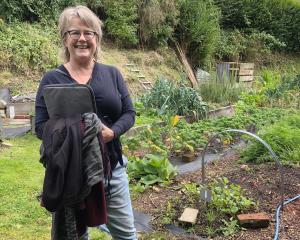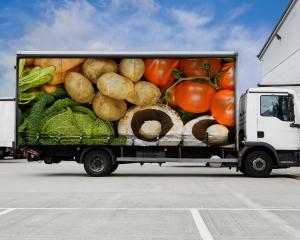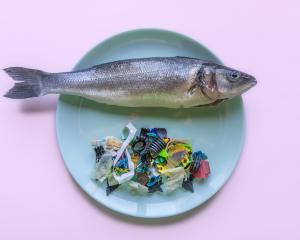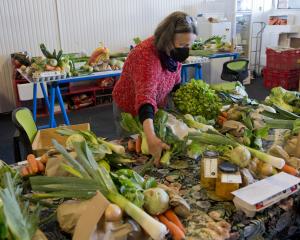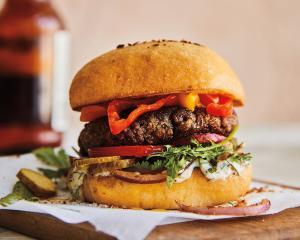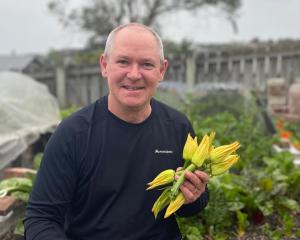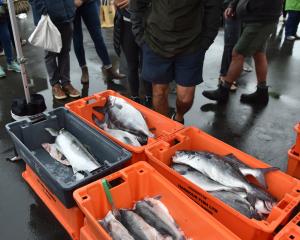

One in three New Zealanders suffered from malnutrition — they got enough (or too many) calories but not enough nutrients because they were eating fast food rather than nutritious fruit and vegetables.
Obesity is usually the outcome of eating food low in nutrition rather than eating too much, and is often a result of poverty and food insecurity, he says.
A Ministry of Health survey revealed that one in five children lived in households experiencing severe to moderate food insecurity, and that was more prevalent in deprived neighbourhoods, he said.
"Poverty and deprivation are at the root of food insecurity. Many people in poverty are solo parents or on the benefit, and Maori and Pacifica are over-represented."
Although it seemed a no-brainer to provide healthy food to people in poverty, it was often assumed they wouldn’t eat it. That is what he and his research team were told when they applied for funding to research how to provide healthy diets for people living in poverty. So they looked into it.
They identified 40 low-income families in a low-socioeconomic area, people renting or in unstable domiciles. Fresh fruit and vegetables were not available in the neighbourhood, he said.
They gave the families free bags of fruit and vegetables for three months, along with advice on how to use them. After that period they offered the bags at cost.
When the food was free, 90% was consumed or given away to whanau, he said.
They had hoped fruit and vegetables would replace some of the fast food in their diet but when the bags cost $5, they were not taken up — people just couldn’t afford it, he said.
At present there are 800million people starving in the world, but there would be enough food to feed everyone if it was equitably distributed, he says.
However, by 2050 the global population will have increased, 70% of us will live in cities and the world will need to produce more food than ever with less land available. In New Zealand, land suitable for growing food, such as that around Pukekohe near Auckland, is being developed into housing and lifestyle blocks. Climate change will also exacerbate the problem.
"The global food system is large and changing all the time. It is remarkably complex with many tensions, triggers, barriers and facilitators that it’s hard to navigate. Changing to a different way of agricultural impact depends on politics, relevant legislation, technology and retail outlets," he said.
Large food companies, under pressure to produce cheap food and concerned about efficiency and profits rather than the environment or ethics, had developed vertical integration, owning the food system from paddock to retail, he said.
"They’ve sewn up the system. It makes for a tight system with little waste, but introduces a corporate model. They care about economics not ethics or moral dilemmas. That’s when we start getting pollutants, not worrying about greenhouse gas or chemicals, producing more and more and taking up more land. They are more efficient but less environmentally savvy."
While the actual supply chain and transport to markets was generally relatively efficient, 28% of all greenhouse gas emissions came from food production for livestock and humans, he said.
"Part of the problem is our dependence on meat and dairy. It’s why the EAT-Lancet recommendations advise us to reduce meat and dairy consumption, but you don’t actually have to become vegan."
However, New Zealanders appear reluctant to reduce their meat consumption, he says.
One way of improving the system was to develop local food systems. The United nations Food and Agriculture Organisation encouraged community food systems, such as urban farms. These could be part of a circular economy bringing money into local areas and contributing to local food security, animal welfare, health and wellbeing, he said.
However, a large part of our economy was built on New Zealand farmers exporting a high-value product that was easy to transport, had a long shelf life and sold at a premium — and that was what the Government favoured, he said.
It’s one of many dilemmas in our food system that will have to be addressed sooner or later.
Comments
Unpalatable as it may be for those wedded to producing and eating meat, the environmental and health evidence for a plant-based diet is clear. About $285bn spent every year around the world treating illness caused by eating red meat alone.
Land required to feed 1 person for 1 year:
Vegan: 1/6th acre
Vegetarian: 3x as much as a vegan
Meat Eater: 18x as much as a vegan
A person who follows a vegan diet produces the equivalent of 50% less carbon dioxide, uses 1/11th oil, 1/13th water, and 1/18th land compared to a meat-lover for their food.
Health professionals in the UK have called for a tax on meat to help tackle the climate crisis and improve health.
Disagree in that buying the in season vegetables and specials on meat is the cheapest way. Fast food is very dear as is much of packaged processed foods. Eat as our grandmothers did and ironically you will have some of the best food in the world and the cheapest on the shelves for the number of people fed. There may be other reasons like too tired after working two jobs or such but the price of good food is not the reason for obesity.



